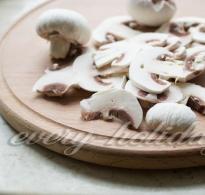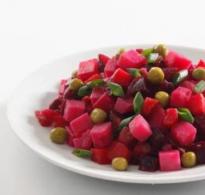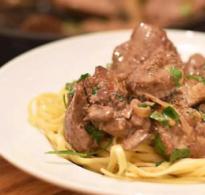Information about what are poisonous mushrooms. The most poisonous mushrooms in the world
Mushrooms – unique products that cannot be attributed to plants or animals. This is a separate species, the composition of which includes both animal proteins and plant components. For this reason, they are nutritious and healthy commodities. Not at all, there are back side medals. The fact is that not every mushroom is edible. There are many on earth dangerous mushrooms, which are characterized by a high concentration of poison. In order not to face an upset stomach, malfunctions in the intestines, even death, you must be sure of the correct choice. For this reason, we will consider the most poisonous mushrooms of our world, which definitely cannot be called edible!
Inedible and deadly mushrooms
10
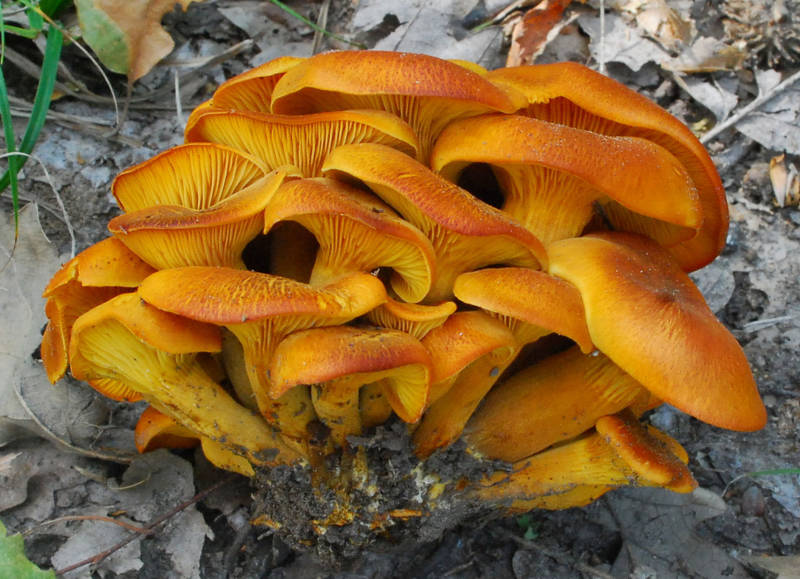
The most poisonous mushrooms on the planet include Omphaloth olive. It usually grows in wooded areas. Sometimes it can be found among rotten stumps, rotten deciduous trunks. Mostly in the Crimea. However, in Europe there are many forests where this poisonous mushroom resembling a fox lives. The difference lies in an unpleasant odor and a toxin called illudin S. Once ingested, this poison provokes severe pain, vomiting and diarrhea. Thus, if you notice appetizing chanterelle, as it seemed to you, check the "catch" for the smell!

dangerous mushroom growing in the northern hemisphere of the planet. Often, burning-caustic russula can be found in deciduous and coniferous forests. It is worth noting that at proper processing this product is suitable for food, by no means, not many people have enough knowledge to cook russula. In addition, even with proper processing, this mushroom is quite bitter and not pleasant. The pronounced sharpness still attracts many gourmets and connoisseurs of delicacies. The raw mushroom contains a high concentration of the poison muscarine. Even a small ingestion leads to disruption of the stomach and vomiting.

In coniferous and deciduous forests, another of the most poisonous mushrooms, called fly agaric. This species is most common in temperate climates. That is, in the Northern Hemisphere of the Earth. It is worth noting that the panther fly agaric is so poisonous that no treatment is terrible for him. Contains several poisons at the same time, including mycoatropine and muscarine. After hitting the stomach paralyzes nervous system. It is worth adding that the presence of alkaloid toxins leads to hallucinations.

One of the most common and dangerous, along with the fly agaric, is wrinkled foliotina. This is a mushroom that grows in Asia, Europe and North America. The danger of this fungus lies in the presence of a poison called amatoxins. Sufficiently braided pigment has caused many deaths on the planet. The thing is that many connoisseurs of forest attractions confuse this mushroom with the edible blue psilocybe. As a result of this error, great amount harmful substances that damage cells gastrointestinal tract.
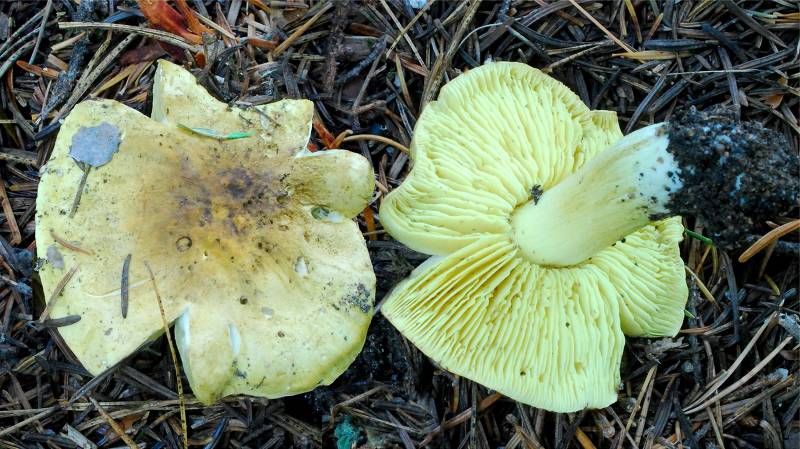
These natural "poisoners", worthy of being among the most poisonous mushrooms on the planet, grow in groups, in a heap. It is from this fact that one should build on the suspicion of greens. As a rule, greenbacks are found in the sandy soils of American and European forest zones. It is worth noting that until recently, mushrooms were considered edible, but in 2001, news of poisoning began to appear. As a result of experiments and studies, it became known that an excess of toxins from eating greenfinches leads to terrible consequences. According to statistics, out of 12 poisonings, 3 are recorded with a fatal outcome.

It is impossible to underestimate the danger to human life from the sulfur-yellow false honeycomb. It is not in vain that it belongs to the most poisonous mushrooms. Contains many toxins that cause severe poisoning. In some cases, not timely medical care leads to death. False honey fungus grows, as a rule, in coniferous forests. From the name it is clear why the mushroom is so dangerous. The fact is that it is difficult to distinguish it from edible ones. Even skilled and experienced foresters sometimes make mistakes. As a result of poisoning, vision is impaired and paralysis overtakes.

Another poisonous and not edible mushroom, which causes fear, is a thin pig. Despite the harmless name, this plant can cause severe poisoning. As in the case of greenfinches, this mushroom has long been considered edible. Not at all, it has now been scientifically proven that an excess of the fungus in the intestines leads to terrible consequences. Fatal cases are most often associated with impaired renal function. This fungus causes kidney failure, shock and amazes internal organs. Due to intravascular coagulation, it is impossible to help!
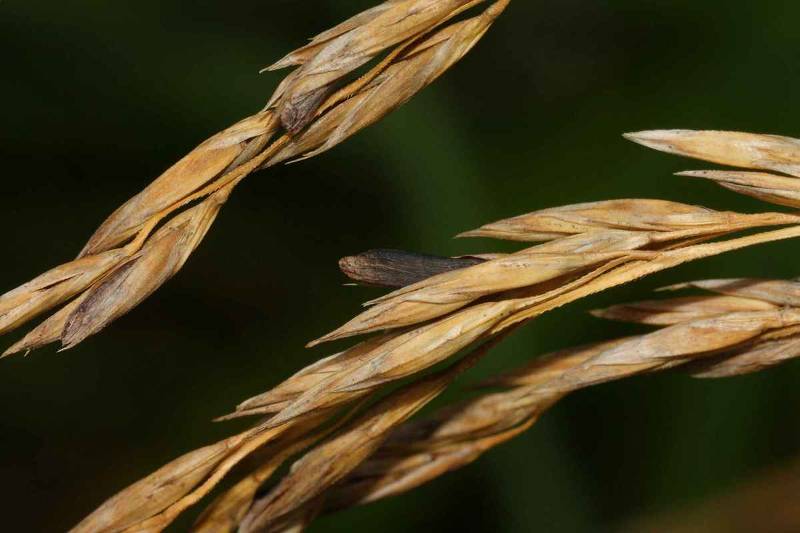
Among the most poisonous mushrooms on Earth is a parasite called Ergot purpurea. A unique species, usually found in herbs and rye. It has a unique purple coloration. It is shaped like a tooth. The spores of this parasite contain many psychotropic neurotoxins that affect the human nervous system. After entering the intestines, this fungus can cause convulsions, spasms, as well as mental illness. Quite often, lethal outcomes are recorded! The fact is that alkaloids are difficult to remove from the body.
Mushrooms occupy in human life important place. Without penicillin and yeast, our existence would be more difficult. The tradition of eating them is not common in all countries, since they are a difficult product for digestion. There are more than 100,000 species of them, some of which are dangerous to humans.
Accurate global statistics on the number of people affected by fungi are not kept. So it is impossible to say for sure which of them is the most dangerous, with complete certainty. Even spoiled pickled edible mushrooms pose a threat. At the slightest suspicion, they should be thrown away, in extreme cases, boil over low heat for at least 30-40 minutes. Botulinum toxin, which is destroyed under such conditions, is one of the most toxic substances in the world, and was previously used as a biological weapon.
In addition, they can absorb harmful substances, so you should not pick mushrooms near roads and industrial facilities. Some members of the list 10 most poisonous mushrooms in the world and during heat treatment do not lose their hazardous properties. And drinking alcohol only worsens the situation in case of poisoning, despite the prevailing opinion. So the main rule is: "Do not try unfamiliar mushrooms!".
10. Waxy talker
The waxy talker is rare. But at the same time, she has pleasant taste and looks like edible pods. Its main difference is the presence of watery circles on the cap. The waxy talker contains the substance muscarine, which is found in fly agaric and other types of talkers. Symptoms of poisoning appear within 20-30 minutes. This is vomiting, pain in the abdomen, confusion, etc. Depending on the situation, the lethal dose is from 10 to 80 grams of this fungus.

Approximately half of cases of fly agaric poisoning are fatal. It is difficult to confuse it with edible mushrooms. But young specimens of this species are similar to champignons, from which they differ bad smell and the presence of a volva (a sac-like blanket located at the very base of the fruiting body of the fungus), often hiding in the ground. With increased humidity, this fly agaric begins to secrete mucus, which does not add to its attractiveness. Signs of poisoning appear within half an hour. This is profuse sweat, heat, salivation and vomiting. If timely medical care is not provided, most often death occurs from cardiac arrest.

This member of the list of the 10 most poisonous mushrooms in the world is very insidious. The action of its toxins begins to manifest itself after a long period of time, from 2 to 24 days, with a high probability leading to death. Therefore, until the 1960s, it was considered edible, and only a whole series of poisonings forced scientists to carefully study the composition. This mushroom is found in Europe, Ukraine and Russia. It is very difficult to distinguish it from other varieties of cobwebs, so it is easier not to collect them at all.

This fungus is one of the most dangerous mushrooms on the planet from the entire genus of fibres. Most often found in deciduous and mixed forests of Europe and Asia, in the European part of Russia and the Caucasus. Usually it is confused with russula and champignons, which leads to poisoning. Visual impairment, chills, vomiting and other signs appear within 20-30 minutes. A person can die if first aid is not provided in time. This effect is given to mushrooms by the substance muscarine, which is also found in red fly agaric. But in Patuillard's fiber box, it is about 20 times more.

Compared to the red fly agaric, it has a less flashy appearance. So it can be completely confused with edible mushrooms. This is especially true for young specimens. It is so poisonous that there are usually no insects near it. The amount of muscarine and muscaridine in it is several times greater than in the red fly agaric. In addition, it contains other dangerous substances: scopolamine, hyoscyamine. For these reasons, the panther fly agaric is included in the ranking of the most poisonous mushrooms on the planet. Most often, the use of these mushrooms in food leads to death due to paralysis of the respiratory muscles and cardiac arrest.

The genus of cobwebs includes about 40 species of mushrooms, only a part of which is edible. They are similar to each other, so it is better to walk past them if you cannot reliably determine the edibility of the mushroom. The cobweb beautiful contains orellanin. It destroys the kidneys, lungs and locomotor system. Moreover, symptoms usually appear one or two weeks after poisoning, when the changes are irreversible, which leads to death even with medical assistance. This fungus is found quite rarely, mainly in coniferous moist forests, especially along the outskirts of swamps.

On the fourth line in the ranking of the most dangerous and poisonous mushrooms on the planet is Galerina fringed. It is dangerous primarily due to its similarity with edible summer honey agaric and is able to deceive even experienced mushroom pickers. In Russia, the bordered galerina began to appear more often due to climate change. Before that, she met in countries where mushrooms are collected very little: Japan, North America, Iran. It grows mainly in coniferous forests, so for safety reasons it is better not to collect mushrooms in them at all. Moreover, it may well get into a cluster of edible mushrooms, so caution should be exercised when collecting them. Symptoms of poisoning with bordered galerina are thirst, the appearance of convulsions, etc. They appear 10-14 hours after it enters the body. The greatest damage is done to the liver, without timely medical care, the likelihood of death is high.

The unsightly appearance of this mushroom most often makes mushroom pickers simply walk past it. But still, cases of poisoning are recorded, and half of them end in the death of a person. Lepiota brown-red is extremely poisonous, one of her hats is enough to get lethal dose toxins. It contains cyanides and nitriles, for which there are no specific antidotes. The first signs of poisoning appear after 10 minutes, and within half an hour a person can die from cardiac arrest. Ambulance most often for such a period simply does not have time to get there. Some sources claim that the main distinguishing feature of this fungus is an odor similar to that of orange syrup.
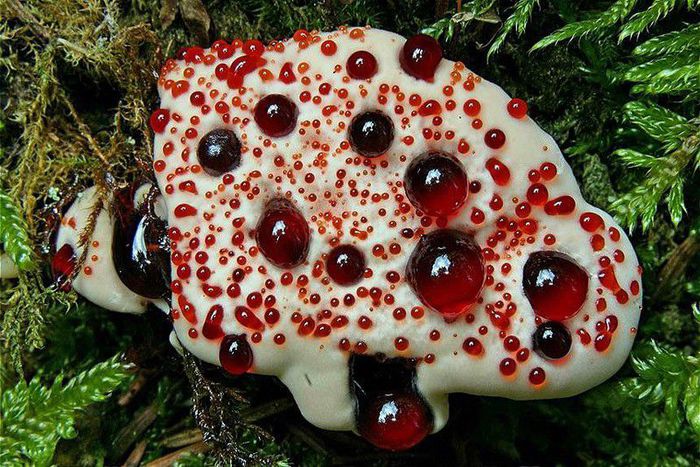
This mushroom is definitely not to be confused with others. It is also called the devil's tooth, and in appearance it simultaneously resembles pastry And ordinary mushroom spattered with blood. The Bleeding Tooth is found mainly in Europe and North America, but it can occasionally be found in our forests. It feeds both on substances from the earth and on insects attracted by its sap. In the future, it may find application in medicine, as it has antibacterial properties and thins the blood. Some sources claim that just licking it is enough to get a lethal dose of toxins, so this is one of the most poisonous mushrooms in the world.
1. Pale grebe
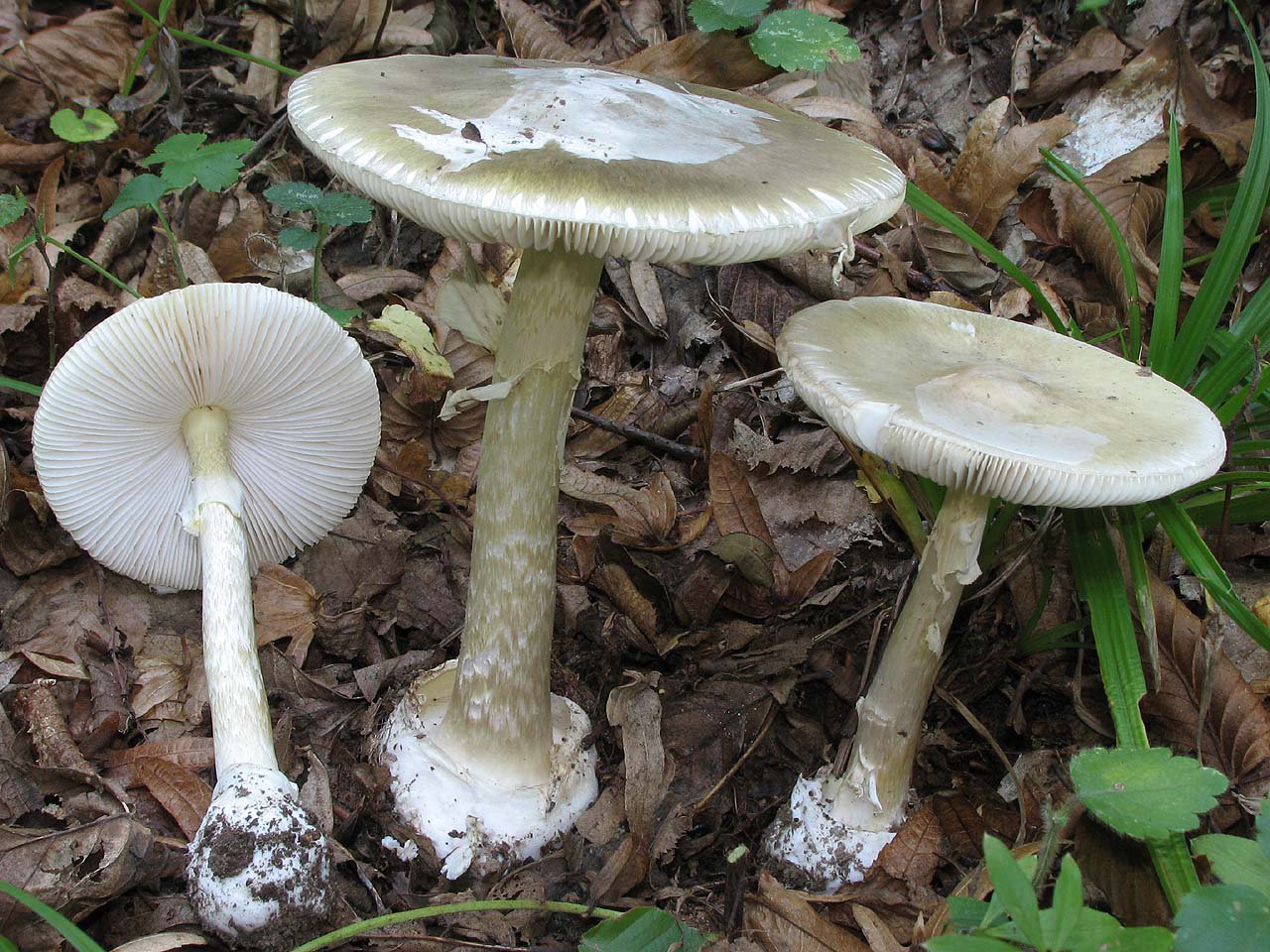
Death cap - the most poisonous mushroom in the world. It rightfully ranks first among the most dangerous mushrooms on the planet. Compared to other mushrooms, exactly. This is due to its similarity with many edible mushrooms: champignons, russula, etc. It contains several toxic substances. Symptoms of poisoning appear within 6 to 24 hours. Usually it is vomiting, colic, muscle pain and diarrhea. Only 30 grams of this fungus is enough to cause severe consequences for adults and guaranteed death for children.
For a picture of poisoning with a pale grebe, a false period of relief is characteristic. After a few days, the symptoms disappear and it seems to the person that everything has passed. At this time, the destruction of the body continues. It is better to refrain from picking young champignons, as it is extremely difficult to distinguish them from the pale grebe.
The most poisonous mushroom on the planet | Video
Top 10 most poisonous mushrooms, according to the site
,
The mushroom is highly poisonous. Contains both muscarine and muscaridine, which are characteristic of other poisonous fly agarics, as well as scopolamine and hyoscyamine, which are found in henbane, dope and some others. poisonous plants.
,
Poisoning occurs when the pale grebe is mistakenly eaten ( delicious mushroom, and it's not a typo).
Heat treatment does not eliminate the toxic effect. For poisoning, it is enough to eat half or a third of one mushroom (about 30 g). Children are especially sensitive, in whom poisoning begins with convulsions or jaw reduction.
Main symptoms: after 0.5 - 2 days there is indomitable vomiting, intestinal colic, muscle pain, unquenchable thirst, cholera-like diarrhea (often with blood). There may be jaundice and an enlarged liver. The pulse is weak, thready. The arterial pressure is lowered, loss of consciousness is observed. As a result of toxic hepatitis and acute cardiovascular insufficiency, in most cases - a fatal outcome.

spring toadstool,
Amanita muscaria is a fungus of the Amanitaceae family. Sometimes considered a type of pale grebe.

Fly agaric smelly,
Inexperienced mushroom pickers can confuse smelly fly agaric with various types champignon, which leads to severe poisoning usually fatal. Mushrooms are easy to distinguish by the absence of volva and colored plates in mature fruiting bodies. However, it should be borne in mind that the fly agaric Volvo can be completely in the soil and therefore be invisible.

,
Deadly poisonous, similar to summer mushrooms.
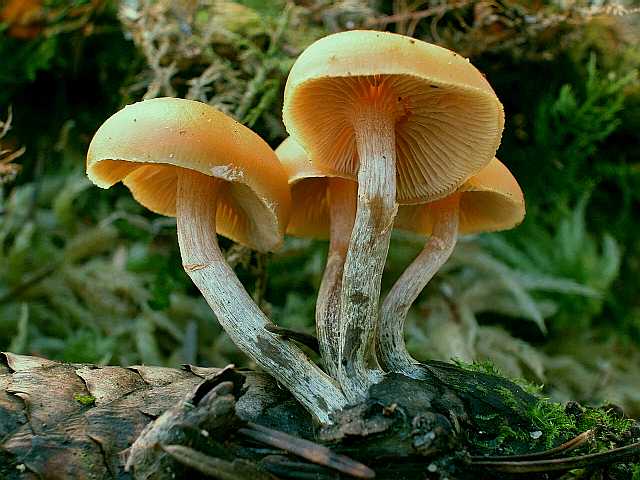
Whitish talker,
Deadly poisonous mushroom; the content of muscarine in the whitish govorushka is higher than in the red fly agaric. Muscarine contained in the fruiting bodies of the whitish talker (as well as in the fruiting bodies of the related species Clitocybe rivulosa and Clitocybe cerussata) can cause severe poisoning, which manifests itself 15-20 minutes after ingestion by increased secretion of saliva and tears, sweating, in large doses - a weakening of the heart rate, a sharp decrease blood pressure, respiratory failure, severe vomiting and diarrhea. Usually the symptoms of poisoning begin to subside after two hours.

The most beautiful cobweb,
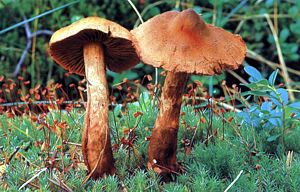

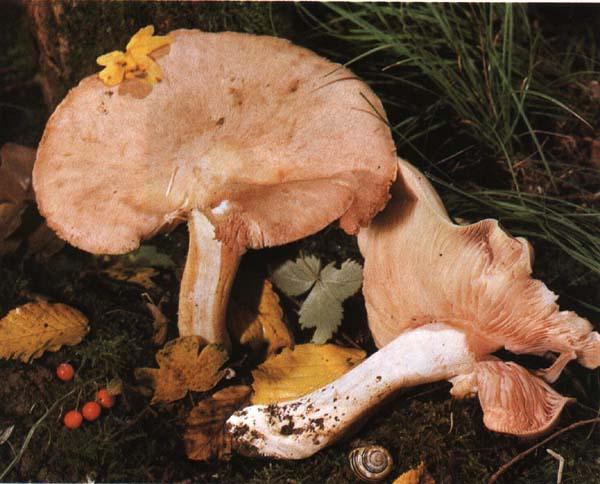
,
The fungus is deadly poisonous and can cause severe muscarinic poisoning with a fatal outcome. Muscarine in the fibers of Patuillard contains several times more than in the red fly agaric. Symptoms of poisoning appear after 0.5-2 hours and are expressed in severe lacrimation and sweating, followed by tachycardia, a sharp decrease in blood pressure, respiratory failure, vomiting and diarrhea. The victim has constriction of the pupils, impaired vision, the skin turns red, then turns pale, all this is accompanied by severe chills.
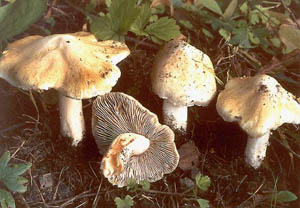
Before you put a mushroom in your mouth, you must be sure that you are eating an edible mushroom, as there are a small number of species in the world that are poisonous. Most of them will only cause an upset stomach, but there are those that, if ingested, will cause no small harm to it and can even cause death. Below is a list with photos of the ten most poisonous and deadly species of mushrooms for humans.
Olive omfalot is a poisonous mushroom that grows in wooded areas on rotten stumps, rotten trunks of deciduous trees in Europe, mainly in the Crimea. Notable for its bioluminescence properties. Appearance resembles a fox, but unlike it, the olive omphalot has bad smell and contains the toxin illudin S, which, when ingested, leads to very severe pain, vomiting and diarrhea.

Russula stinging is widespread in the northern hemisphere in deciduous, coniferous and mixed forests. With proper processing, this mushroom is conditionally suitable for food, but it tastes bitter, with a pronounced pungency. Raw is poisonous, it contains the poison muscarine. Not even drinking a large number raw mushroom leads to disruption of the gastrointestinal tract, abdominal pain, nausea and vomiting.

Panther Amanita grows in coniferous, deciduous and mixed forests in the temperate climate of the Northern Hemisphere. The mushroom is highly poisonous and contains poisons such as muscarine and mycoatropine that act on the central nervous system, as well as a number of toxic alkaloids that cause gastrointestinal disorders, hallucinations and can lead to death.

On the seventh line in the list of the most dangerous and poisonous mushrooms in the world is Foliotina wrinkled - a poisonous mushroom that grows in Europe, Asia and North America. Contains a strong poison called amatoxins, which is very toxic to the liver and is the cause of many deaths. Sometimes these mushrooms are confused with blue psilocybe.

Greenfinch grows in small groups in dry coniferous forests on sandy soils in North America and Europe. Until recently, it was considered a good edible mushroom, but after the publication in 2001 of a report of poisoning when eating a large number of greenfinches (12 cases, 3 of them fatal), it is suspected of being poisonous. Symptoms of poisoning include muscle weakness, pain, cramps, nausea, and sweating.

Sulphur-yellow honey fungus is a highly poisonous mushroom found on all continents except Africa and Antarctica. Grow on old stumps of deciduous and coniferous trees in August-November. When eaten, the fungus causes severe, sometimes fatal poisoning. Symptoms appear after a few hours and are accompanied by abdominal pain, nausea, vomiting, sweating, diarrhea and bloating, sometimes blurred vision and even paralysis.

The thin pig is a poisonous mushroom common in moist deciduous, coniferous and mixed forests, gardens, forest belts of the Northern Hemisphere in regions with a temperate climate. Mushroom long time It was considered conditionally edible, but now its toxicity has been proven. Prolonged use of thin pigs in food leads to severe poisoning, especially in people with diseased kidneys. Potentially fatal complications include acute renal failure, shock, respiratory failure, and disseminated intravascular coagulation.

It is known that in the Middle Ages there were epidemics among people and animals, due to the consumption of rye bread, which was made from infected grain. The epidemic is known as "St. Anthony's fire" or "sacred fire".

Amanita ocreata, also known as the "angel of death", is a deadly poisonous mushroom from the Amanita family. Distributed in mixed forests mainly in the northeastern part of North America from Washington to Baja California. Contains alpha-amanitin and other amatoxins that cause the death of liver cells and other organs, as well as a violation of protein synthesis. Complications of poisoning include increased intracranial pressure, intracranial hemorrhage, sepsis, pancreatitis, acute renal failure, and cardiac arrest. Death usually occurs 6–16 days after poisoning.

Pale grebe is the most poisonous mushroom in the world. Is the cause of most fatal poisonings arising after the use of mushrooms. It grows in almost all types of forests in Europe, Asia, North America and North Africa. Likes dark, damp places. Contains two types of toxins, amanitin and phalloidin, which cause liver and kidney failure, and often the only way to avoid death is to transplant them. It is estimated that even half of the pale grebe contains enough toxin to kill an adult human. In addition, the toxicity of the mushroom does not decrease after it has been cooked, frozen, or dried. Sometimes they are mistakenly collected instead of champignons and green russula.
autumn mushroom season continues. Along with it, the number of people poisoned by these gifts of the forest continues to grow. The whole point is that inedible mushrooms outwardly it can be quite difficult to distinguish from edible ones. Of course, the main rule of any experienced mushroom picker: if in doubt, don't take it. However, even this does not exclude the possibility of accidentally putting poison in the basket.
Poisonous mushrooms of Russia
About 30 species of mushrooms that are unsuitable for food grow in our forests. The most poisonous mushroom in Russia is death cap. A tiny piece, weighing only a few grams, can be fatal. Even long heat treatment is not able to destroy the poisons of the toadstool - folloedin and amanitotoxin. It is easiest to confuse a pale grebe with russula or champignon. It is distinguished by white plates under the hat, a characteristic ring - a skirt and a Volvo (egg) at the bottom of the leg.
Other most poisonous mushrooms, whose names you probably know, are fly agarics. However, it is almost impossible to confuse fly agarics with edible ones, since they are immediately given out by characteristic white dots on the hat. But bile and satanic are very similar to white. You can reveal them by breaking them a little. At the same time, inedible ones will begin to acquire a reddish or brown tint.
Basic rules of mushroom hunting
Of course, the best quiet hunting walk only with experienced mushroom picker, which in practice will teach you how not to mistakenly put the most poisonous mushroom in your basket. However, even in this case, there are basic rules that you must remember when going for the gifts of the forest:
- Edible mushrooms do not have a growth at the bottom, from which they seem to grow. A similar "pouch" at the bottom is typical only for inedible ones.
- Smell. false value- has a smell similar to the smell of radish or horseradish, the toadstool does not have a mushroom smell, and the flesh of the false honey agaric smells unpleasant.
- Mushrooms that turn pink or red when broken are most often unsuitable for food.
- false fox looks brighter than usual, and the edge is not so wavy.
You can not collect old or rotten mushrooms, because they could already begin the process of decomposition and release of toxins. In this case, even an edible mushroom can be hazardous to health. In addition, you can not engage in mushroom hunting in places with environmental problems, in particular, near roads, treatment facilities, landfills. Mushrooms tend to draw in all the substances contained in the soil, including toxins.
The most poisonous mushroom on Earth
Of course, the pale grebe is one of the most poisonous plants, but the most poisonous mushroom in the world is the bloody tooth. The surface of his hat white color, and it looks like red drops appear on it, due to which it looks extremely unusual. The oozing liquid is so poisonous that it is enough to simply lick the surface of a bloody tooth to receive a lethal dose of toxic substances. It is found only in forests. Western Europe and North America.
If you are unsure of your knowledge regarding the differences between inedible and edible species mushrooms - you better not go mushroom hunting. After all, a mistake can be very costly. The best option in this case, it will be for you to purchase specially grown mushrooms in the store or to breed them yourself: for example, grow champignons at home.


